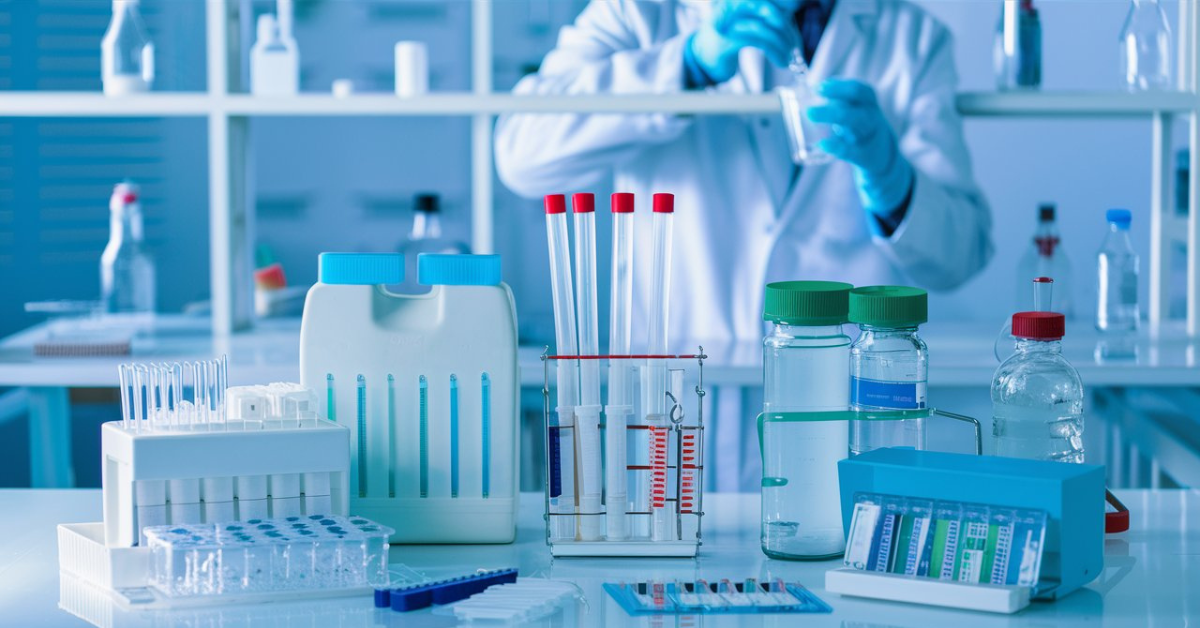Why Water Testing Kits Are Vital for Health
Introduction Of Water Testing Kits
Water testing kits are indispensable tools in ensuring the safety and purity of our water supply. In today’s world, where access to clean water is crucial for maintaining good health, the importance of these kits cannot be overstated. From detecting harmful contaminants to preventing waterborne diseases, water testing kits play a vital role in safeguarding public health.
Understanding Water Quality
Water quality refers to the chemical, physical, and biological characteristics of water that determine its suitability for various purposes, including drinking, irrigation, and recreational activities. Clean water is essential for supporting life and maintaining ecosystem balance. It is crucial for hydration, sanitation, and agricultural productivity.
Common Contaminants in Water
Water can be contaminated by various pollutants, including bacteria, viruses, chemicals, and heavy metals. These contaminants pose significant health risks to humans and ecosystems. Common contaminants include pathogens like E. coli, chemicals like lead and arsenic, and pollutants from industrial and agricultural activities.
Role of Water Testing Kits
Water testing kits are tools used to analyze the quality of water by detecting and measuring the presence of contaminants. These kits enable individuals and organizations to assess the safety of their water sources and take appropriate measures to address any issues. They are essential for ensuring compliance with regulatory standards and protecting public health.
Benefits of Using Water Testing Kits
One of the primary benefits of water testing kits is the early detection of contaminants. By identifying potential risks promptly, individuals can take proactive steps to mitigate them, thereby preventing waterborne diseases and other health problems. Additionally, water testing kits provide peace of mind to consumers by assuring them of the safety of their water supply.
Types of Water Testing Kits
Water testing kits come in various forms, including home testing kits and laboratory testing services. Home testing kits are convenient and user-friendly, allowing individuals to test their water quality at home. Laboratory testing services offer more comprehensive analyses and are often used for more complex or specialized testing requirements.
Key Parameters Tested by Water Testing Kits
Water testing kits measure various parameters to assess water quality, including bacteria and pathogens, chemical contaminants, and heavy metals. These parameters provide valuable insights into the safety and purity of the water supply, helping to identify potential health risks and sources of contamination.
Factors to Consider When Choosing a Water Testing Kit
When selecting a water testing kit, several factors should be considered, including accuracy and reliability, ease of use, and cost-effectiveness. It is essential to choose a kit that meets your specific testing needs and budget while ensuring accurate and reliable results.
Steps to Conducting a Water Test
Conducting a water test involves several steps, including collecting water samples, following testing instructions, and interpreting test results. Proper sample collection and testing procedures are critical to obtaining accurate and reliable results that reflect the true quality of the water supply.
Interpreting Water Test Results
Interpreting water test results requires an understanding of contamination levels and potential health risks associated with detected contaminants. It is essential to analyze the results comprehensively and take appropriate actions based on the findings to address any issues and ensure water safety.
Importance of Regular Testing
Regular testing of water quality is essential due to changing environmental conditions, aging infrastructure, and lifestyle factors that can affect water quality over time. By conducting regular tests, individuals and organizations can monitor changes in water quality and take timely measures to maintain or improve it.
Myths and Misconceptions About Water Testing
There are several common myths and misconceptions about water testing, such as the belief that clean-looking water is always safe to drink or that boiling water eliminates all contaminants. Addressing these misconceptions is crucial for promoting proper water testing practices and ensuring public health and safety.
Addressing Concerns About Water Quality
Concerns about water quality arise from various sources, including pollution, aging infrastructure, and agricultural runoff. By identifying and addressing these concerns, policymakers, regulators, and communities can work together to protect water resources and ensure access to safe and clean water for all.
Steps to Improve Water Quality
Improving water quality requires implementing effective water treatment methods, installing filtration and purification systems, and adopting practices like boiling water for disinfection. These steps help remove contaminants and pollutants, ensuring that water is safe for consumption and other uses.
Case Studies: Impact of Water Testing
Case studies provide real-life examples of the importance of water testing in protecting public health and safety. By highlighting successful interventions and outcomes, these case studies demonstrate the effectiveness of water testing in identifying and addressing water quality issues.
Government Regulations and Standards
Government regulations and standards play a crucial role in ensuring water quality and safety. Regulatory agencies like the Environmental Protection Agency (EPA) establish guidelines and standards for water quality testing, treatment, and management to protect public health and the environment.
Community Health Initiatives
Community-based health initiatives, such as water quality monitoring programs and public awareness campaigns, play a vital role in promoting water safety and hygiene. By engaging communities and raising awareness about water quality issues, these initiatives empower individuals to take proactive steps to protect their health and well-being.
Future Trends in Water Testing
Advancements in technology and scientific research are driving future trends in water testing, including the development of innovative testing methods and technologies, the integration of data-driven approaches, and a focus on sustainability and environmental impact.
Conclusion of Water Testing Kits
In conclusion, water testing kits are vital tools for ensuring the safety and purity of our water supply. By detecting contaminants, assessing water quality, and taking appropriate measures to address any issues, these kits play a critical role in protecting public health and the environment. It is essential for individuals, communities, and policymakers to prioritize water testing and invest in measures to ensure access to safe and clean water for all.

